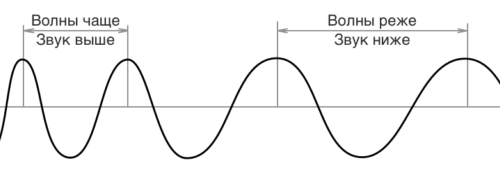What types of music are there?
Contents
What types of music are there? Musical style is a capacious and multifaceted concept. It can be defined as a figurative unity, a set of means of expressing artistic and ideological content using the language of music.
The concept of music style is so broad that its specification suggests itself: this term applies both to different eras, genres, movements and schools, as well as to individual composers and even performers. Let’s try to figure out what types of music there are.
Style of the era
The concept of era style focuses on the historical aspect. There are many classifications, some of which highlight the largest historical eras in the development of music (Renaissance, Baroque, classicism, modernity, etc.), while others, on the contrary, split the history of music into relatively small periods previously identified by other art historical disciplines (romanticism , impressionism, modernism, etc.).
A classic example of the style of the era is Baroque music, the characteristic features of which are interest in the inner world of the individual, drama, contrasting depiction of the forces of nature, the development of opera and instrumental music (C. Monteverdi, A. Vivaldi, G. F. Handel).
Genre style
The style of a genre reflects the specifics of the content, musical techniques and characteristics of certain musical genres, which, in turn, can be classified on different grounds.
Therefore, the concept of style is most appropriate for those genres in which the most common features are clearly expressed. This includes genres based on folk music (various ritual songs, folk dances), church chants, and romances.
If we take works of large forms (opera, oratorio, symphony, etc.), then here too the style of the genre is always clearly readable, despite the fact that the styles of the era, movements and the author’s style are superimposed on it.
But if a composer comes up with some new genre, then in this case the features of the genre style are difficult to immediately establish – for this, time must pass, during which other works in the same genre will appear. This was the case, for example, with Mendelssohn’s “songs without words.” Agree, it’s a strange song without words, but after his 48 samples of plays in this genre, other composers began to boldly call their plays by the same name.
Musical style
The style of a musical movement has many similarities with the style of the era: after all, some movements are considered by musicologists as entire eras in music.
But there are also areas for which it is possible to highlight stylistic nuances that are unique to them. These include the Viennese classical school (L. van Beethoven, J. Haydn, W.A. Mozart). The classical direction is characterized by simplicity, expressiveness, rich harmonic language, and detailed development of the theme.
When talking about what types of music there are, one cannot ignore national characteristics.
National style
The basis of the national musical style is folklore. Many great composers were inspired by folk melodies, weaving them into their creations. Some works even have corresponding names (for example, the Hungarian rhapsodies of F. Liszt, “Hungarian Dances” by J. Brahms, “Norwegian Folk Songs and Dances for Piano” by E. Grieg, “Aragonese Jota” by M.I. Glinka). In others, folk motifs become leading themes (for example, “There was a birch tree in the field” in the finale of P. I. Tchaikovsky’s Fourth Symphony).
If we approach the question of what styles of music there are, from the point of view of composition schools, individual composers and musicians, then we can distinguish several more musical styles.
Composer association style
If a composition school is characterized by a high degree of commonality of artistic techniques, then it is logical to highlight the style inherent in this school.
We can talk about the styles of polyphonic schools of the Renaissance, the styles of various Italian opera schools of the 17th century, or the styles of instrumental schools of the 17th–18th centuries.
In Russian music of the 19th century there also existed a creative association of composers – the famous “Mighty Handful”. The stylistic commonality among the composers included in this group was manifested in a single line of development, choice of subjects, and reliance on Russian musical folklore.
Individual composer’s style
Composer’s style is a concept that is much easier to specify, because the work of any composer is limited to a relatively short time period and certain trends of the musical era. So, literally by the first bars you can recognize, for example, the music of Mozart or Rossini.
Naturally, a composer, like any person, changes throughout his life, and this leaves an imprint on the style of his work. But some stylistic features still remain unchanged, inherent only to him, and are a kind of “calling card” of the author.
Performing style
Performing art is based on the individual performance style of the musician, who interprets the composer’s intention in his own way. The performing style is manifested in the emotional coloring of the performance of the works of a particular author.
Vivid examples here are those composers who were, in addition, virtuoso musicians. This includes Niccolo Paganini, who amazed listeners with his impeccable technique and unusual techniques of playing the violin, and the brilliant pianist Sergei Rachmaninov, a true knight of music, who subordinated the melodic outline to a strict rhythmic pattern.
Here are the different styles of music. This list, of course, can be supplemented with classification on other grounds, since the world’s musical heritage is large and diverse.




